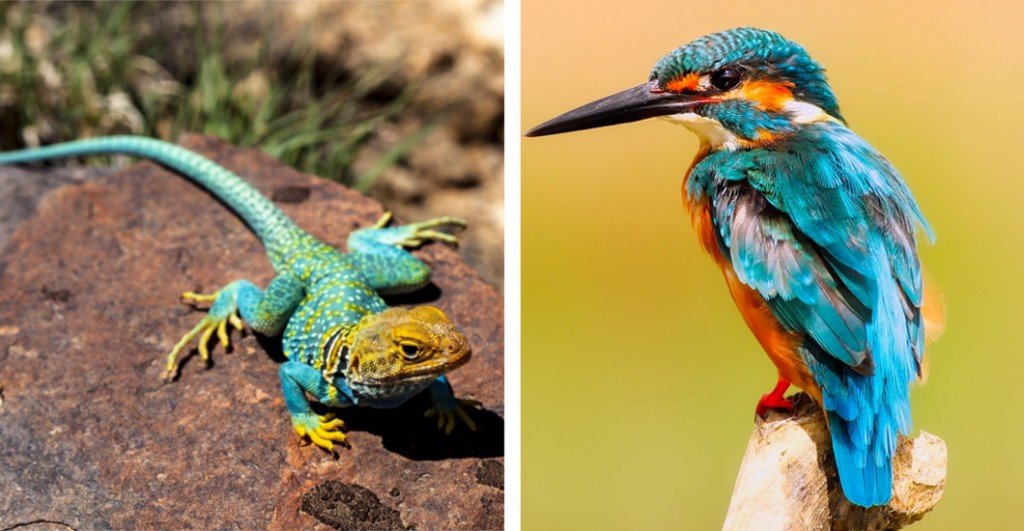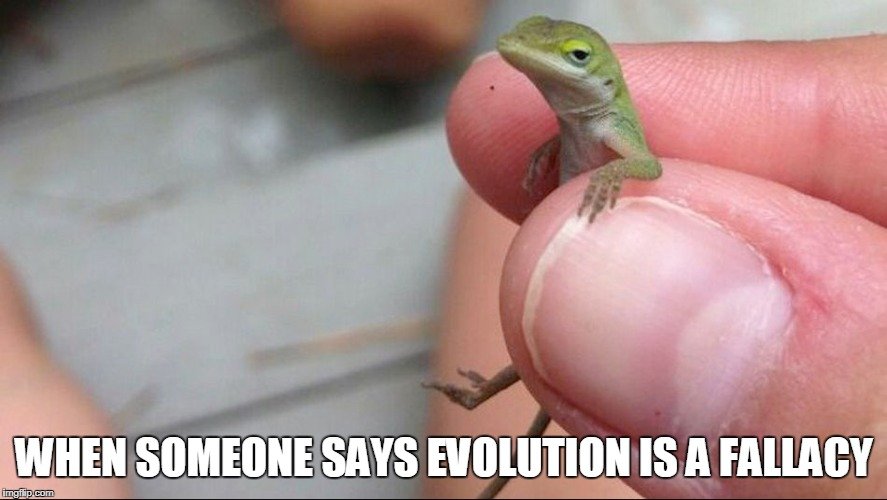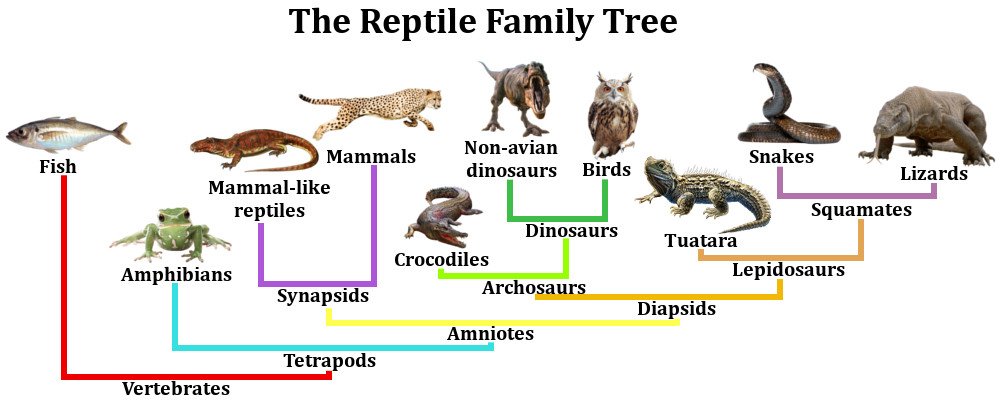Table of Contents (click to expand)
Birds are dinosaurs. Actually, birds and mammals are technically reptiles, as they descended from the very first reptile. Birds are more intimately related to dinosaurs, as they branched off from a dinosaur. The first group of reptiles split 300 million years ago. Some 40 million years later, a group called therapsids branched off, and this group eventually evolved to become what we now deem modern mammals.
The word “reptile” often invokes a picture of a long taciturn animal with an equally long tail that lurches across swamps. A lizard quickly comes to my mind, which is the most recognizable of all reptiles. Lizards are known to be cold-blooded vertebrates suffused with scales that produce leathery or hard-shelled eggs, as well as a bony skeleton that supports their body. Snakes, turtles, crocodiles and alligators are other common reptiles.

On the other hand, birds possess feathery wings that they use to glide through the air and they have conspicuously distinctive and complex behavioral traits, such as their affinity for rhythms. However, when it comes to appearance, even the evolution of humans from chimps seems ridiculous, but this argument would end before it begins when we recall that birds are warm-blooded animals. Birds and reptiles seem to be entirely different sets of species, yet some classifications often categorize birds as reptiles… why is that the case?
What Is A Reptile? Classification Of Reptiles
Fundamentally, classification means drawing lines between species to differentiate between them. Since we essentially evolved from fishes, baseless classification would group us with them, along with every other animal that diverged from the fish that decided to step out and colonize land. However, this line isn’t drawn arbitrarily. Classifications come in two types: Linnaean and Phylogenetic.
The Linnaean system was devised by Carolus Linnaeus, according to which organisms are classified by their unique characteristics, regardless of the ancestors they descend from or might have descended from.
According to Linnaean classification, a “reptile” is any organism that is covered with scales that obviate the loss of water through its skin, produces eggs covered by a hard shell, which protects its offspring from dying while growing inside them, and is commonly found in warm, tropical places. Therefore, based on this method of classification, birds aren’t reptiles.

The Phylogenetic classification system, on the other hand, devised by Willi Hennig around 1940, classifies organisms based on ancestry, where their unique characteristics are perceived as evidence to identify ancestors.
A “reptile” is, therefore, any organism that has descended from the original group of reptiles, which technically, includes birds. According to phylogenetic classification, birds are reptiles in the same way that everything that descended from the first vertebrate is a vertebrate.
This is confusing…. so which classification should we accept? The latter seems a bit fishy and dissuasive. Both classifications are known to be useful in their own ways. Polygenetic classification allows us to find the relationship between different organisms, whereas the Linnaean system makes for a better understanding of how organisms live.
Also Read: Are Crocodiles Bad At Evolution?
Birds Are Dinosaurs Who Were Reptiles
Animal classification is lucrative when the animal being classified into a group shares an evolutionary history with the animals already in that group.
Consider mammals as a group of animals that are more closely related to each other than to any other kind of animal. Ignoring their family for now, we can discern that a dog is closely related to you, for example. You both have fur on your bodies and are fed milk by your mothers during childhood. Regardless of our radically different appearances, behaviors and lives, we are closely related to dogs because we share a common ancestor. Trace both the twigs to their beginnings and you’ll find them splitting from a common branch.

In the same way, birds and mammals are technically reptiles, as they descended from the very first reptile. However, we must rigorously scale down our resolution for a more meticulous classification.
When we calibrate our microscope appropriately, we find that birds are more intimately related to dinosaurs, as they branched off from a dinosaur. The first group of reptiles split 300 million years ago. Some 40 million years later, a group called therapsids branched off, and this group eventually evolved to become what we now deem modern mammals.
Around 120 million years later, several branches diverged, one of which was dinosaurs – a highly successful species that was distantly related to snakes, lizards and turtles – organisms that split off at different times.
However, 65 million years ago all dinosaurs except one were annihilated in a mass extinction precipitated by a comet 6.2 to 9.3 miles in diameter crashing into our planet. Only one species of dinosaurs survived – the avian dinosaurs. These dinosaurs had long arms like birds, elongated beaks with sharp teeth, and some were even covered in feathers. Modern birds are believed to be evolved from these bird-like dinosaurs. Their closest relatives are crocodiles and alligators.

However, one major characteristic remains inexplicable – what accounts for a bird’s warm blood?
Also Read: Modern-Day Dinosaurs: The Descendants Of Dinosaurs That Surround Us Today
Why Are Birds Warm-blooded If Dinosaurs Were Cold-blooded?
Given that crocodiles, who share a common ancestor with dinosaurs and birds, are sluggish, cold-blooded animals, how did one branch manage to transmute its physiology so radically?
Scientists suggest that warm-bloodedness or endothermy must have been introduced at least once on that branch. Exactly where remains debatable. Another theory claims that dinosaurs weren’t cold-blooded in the first place. One paper suggested that dinosaurs were neither warm-blooded like mammals nor cold-blooded like lizards. They claim that the dinosaurs achieved a middle ground, now exhibited by tunas and leatherback turtles. This trait is known as mesothermy.
Mesothermy provided a tremendous ecological advantage — dinosaurs could locomote much faster than a crocodile on land, but also require less food than a high metabolism mammal. The researchers justified their claim by adding: “The fact that dinosaurs were pretty much dominant for 130 million years speaks to the fact that they had some special things going for them.” Birds are estimated to have evolved from such mesothermic dinosaurs. In short, dinosaurs aren’t exactly extinct. You see them every day, serenely flying overhead in the blue sky, or perching on branches, pooping on your brand-new shirt!
Also Read: Why Do Birds Have A Core Body Temperature Higher Than Other Animals?
How well do you know about reptiles?

References (click to expand)
- Birds, Dinosaurs, and Reptiles - Ask A Biologist |. Ask A Biologist
- Are birds reptiles?. The University of California, Santa Barbara
- Turtles, snakes, lizards, and relatives - BioKIDS. biokids.umich.edu
- Witze, A. (2014, June 12). Dinosaurs neither warm-blooded nor cold-blooded. Nature. Springer Science and Business Media LLC.
